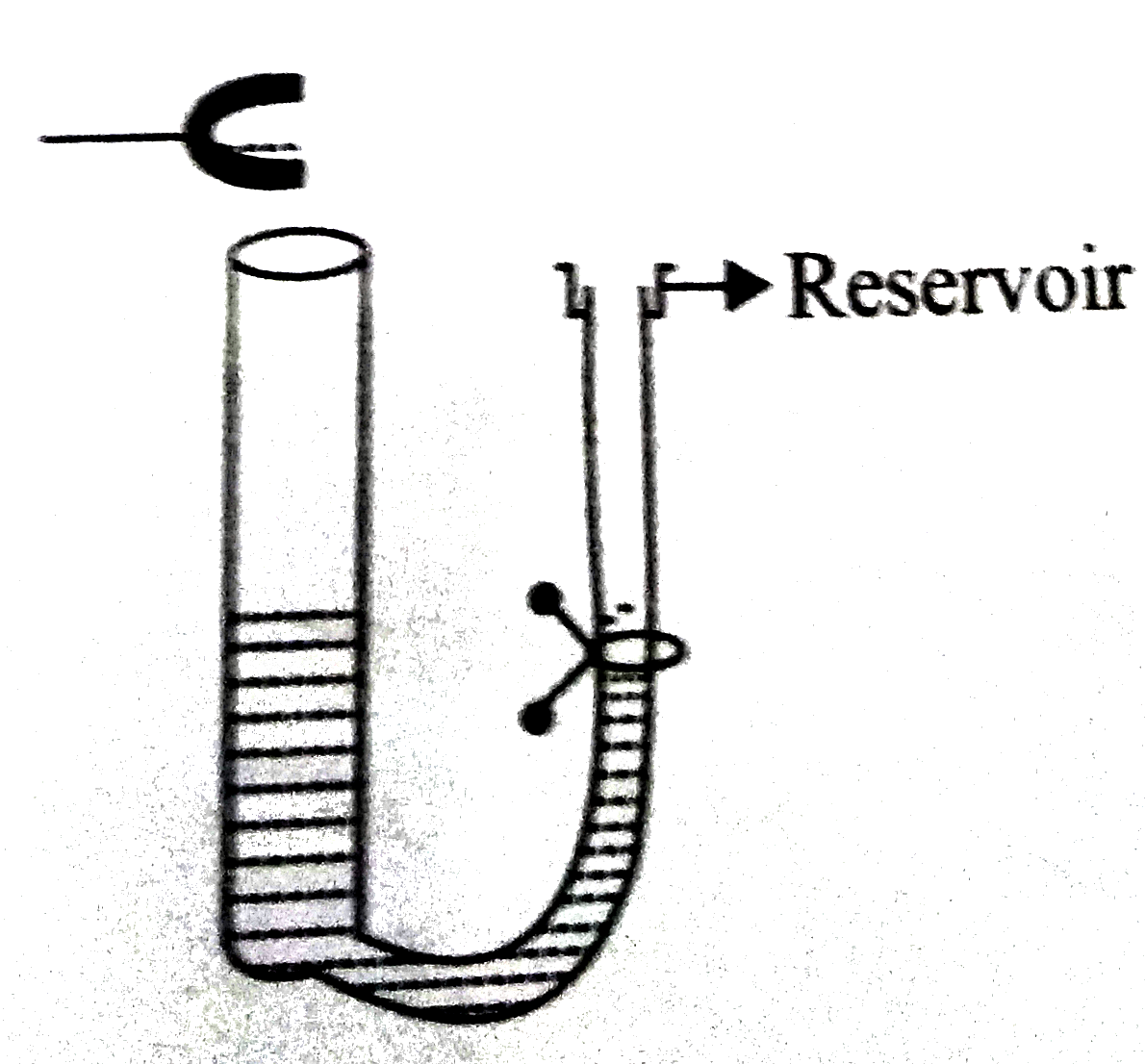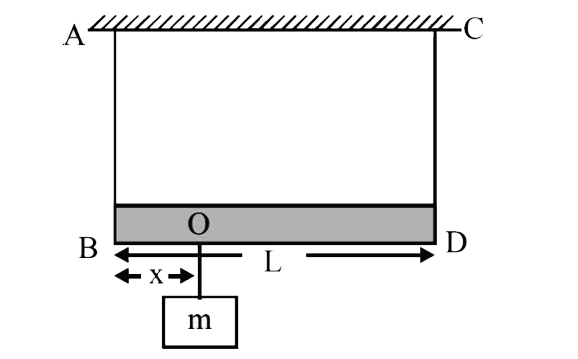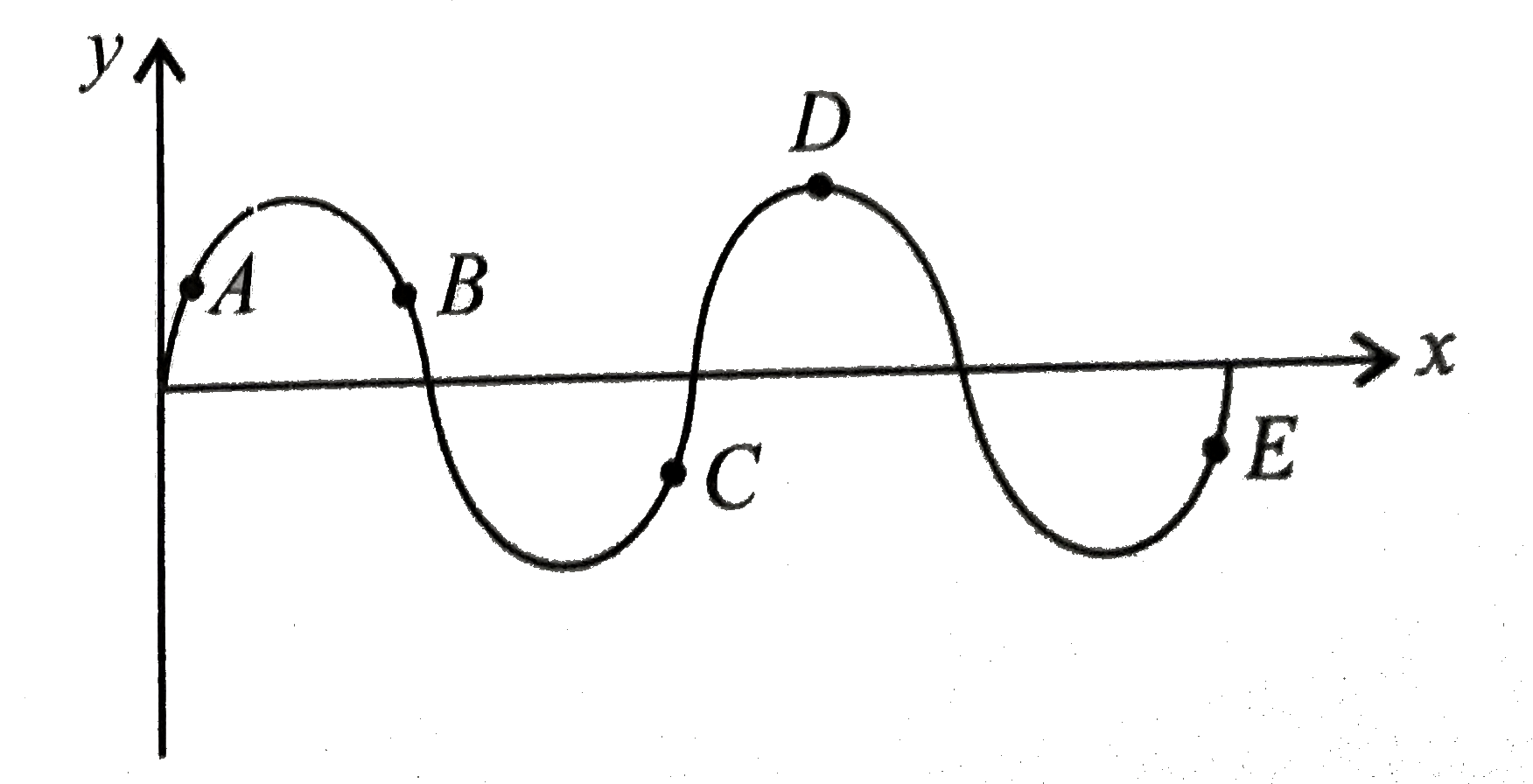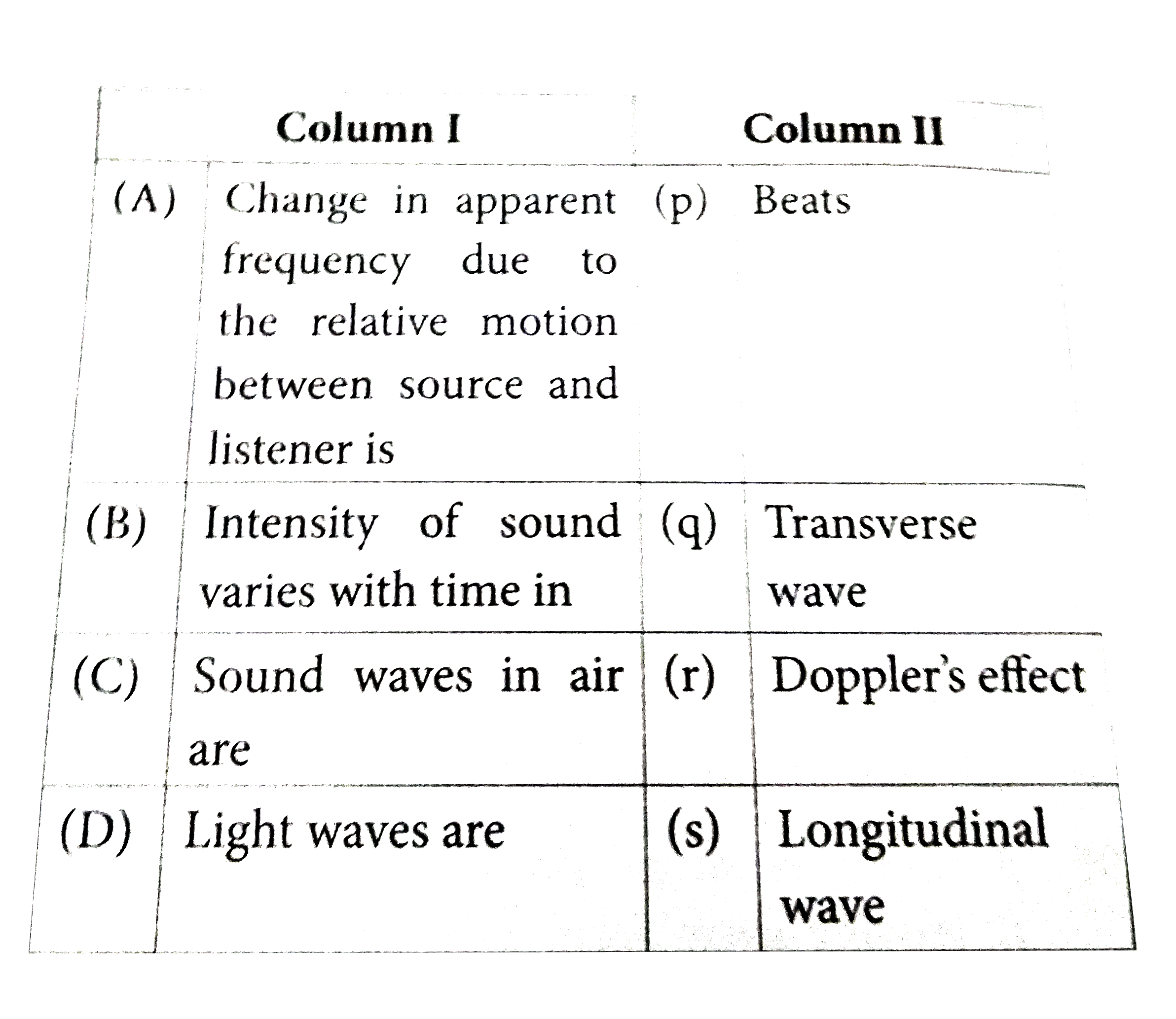Assertion And Reason from NCERT FINGERTIPS PHYSICS (HINGLISH) WAVES for Class 11
| Class 11 | PHYSICS |
| Chapter | WAVES |
| NCERT FINGERTIPS PHYSICS (HINGLISH) | Assertion And Reason |
| Medium | English |
| Academic Year | 2023-2024 |
Question 10
The equation of a progressive wave is given by y = 5 sin(100πt−0.4πx) where y and x are in m and t is in s.
(1) The amplitude of the wave is 5 m.
(2) The wavelength of the wave is 5 m.
(3) The frequency of the wave is 50 Hz.
( 4) The velocity of the wave is 250 m s−1
Which of the following statements are correct? View SolutionQuestion 45
Earthquakes generate sound waves inside the earth. Unlike a gas, the earth can experience both transverse (S) and longitudinal (P) sound waves. Typically, the speed of S wave is about 4.0 km s−1, and that of P wave is 8.0 kms−1. A seismograph records P and S waved from an earthquake. The first P wave arrives 4 min before the first S wave. Assuming the waves travel in straight line, how far away does the earthquake occur?View SolutionQuestion 76
A tuning fork vibrating with a frequency of 500 Hz is kept close to the open end of a tube filled with water, as shown in figure. The water level in the tube is gradually lowered When the water level is 17 cm below the open the open end, maximum intensity of sound is heard. If the room temperature is 20∘ C, the speed of sound in air at the temperature is
 View Solution
View SolutionQuestion 78
A glass tube of 1.0m length is filled with water . The water can be drained out slowly at the bottom of the tube . If a vibrating tuning fork of frequency 500c/s is brought at the upper end of the tube and the velocity of sound is 330m/s, then the total number of resonances obtained will be View SolutionQuestion 88
A closed organ pipe and an open organ pipe of same length produce 2 beats/second while vibrating in their fundamental modes. The length of the open organ pipe is halved and that of closed pipe is doubled. Then, the number of beats produced per second while vibrating in the fundamental mode is View SolutionQuestion 93
A train standing at the outer signal of a railway station blows a whistle of frequency 400 Hz in still air. The train begins to move with a speed of 30 ms−1 towards the platform. The frequency of the sound heard by an observer standing on the platform is
(Speed of sound in air = 330 m s−1) View SolutionQuestion 95
A train moving at a speed of 220ms−1 towards a stationary object emits a sound of frequency 1000 Hz. Some of the sound reaching the object gets reflected back to the train as echo. The frequency of the echo as detected by the driver of the train is (speed of sound in air is 330ms−1)View SolutionQuestion 101
One end of a taut string of length 3m along the x-axis is fixed at x=0. The speed of the waves in the string is 100ms−1. The other end of the string is vibrating in the y-direction so that stationary waves are set up in the string. The possible wavelength(s) of these stationary waves is (are)View SolutionQuestion 102
Vibrating tuning fork of frequency n is placed near the open end of a long cylindrical tube. The tube has a side opening and is fitted with a movable reflecting piston. As the piston is moved through 8.75cm, the intensity of sound changes from a maximum to minimum. If the speed of sound is 350m/s. Then n is
 View Solution
View SolutionQuestion 106
A massless rod of length L is suspended by two identical string AB and CD of equal length. A block of mass m is suspended from point O such that BO is equal to 'x'. Further it is observed that the frequency of 1st harmonic in AB is equal to 2nd harmonic frequency in CD. 'x' is
 View Solution
View SolutionQuestion 107
A stationary source is emitting sound at a fixed frequency f0, which is reflected by two cars approaching the source. The difference between the frequencies of sound reflected from the cars is 1.2% of f0. What is the difference in the speeds of the cars (in km per hour) to the nearest integer ? The cars are moving at constant speeds much smaller than the speed of sound which is 330ms−1. View SolutionQuestion 118
A train whistling at constant frequency is moving towards a station at a constant speed V. The train goes past a stationary observer on the station. The frequency n′ of the sound as heard by the observer is plotted as a function of time t, figure. Identify the expected curve.View SolutionQuestion 121
S1: Source and observer both are stationary and wind is blowing in a direction from source to observer then observer detects an apparent increase in frequency.
S2: Beat frequency is defined as the difference of frequency of two sources.
S3: Pressure node is always a displacement node and pressure antinode is always a displacement antinode. View Solution





